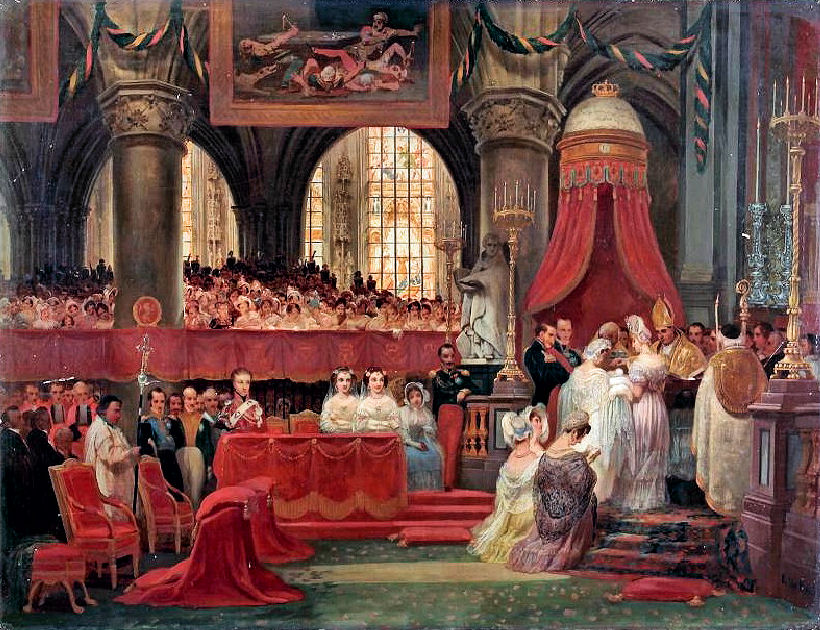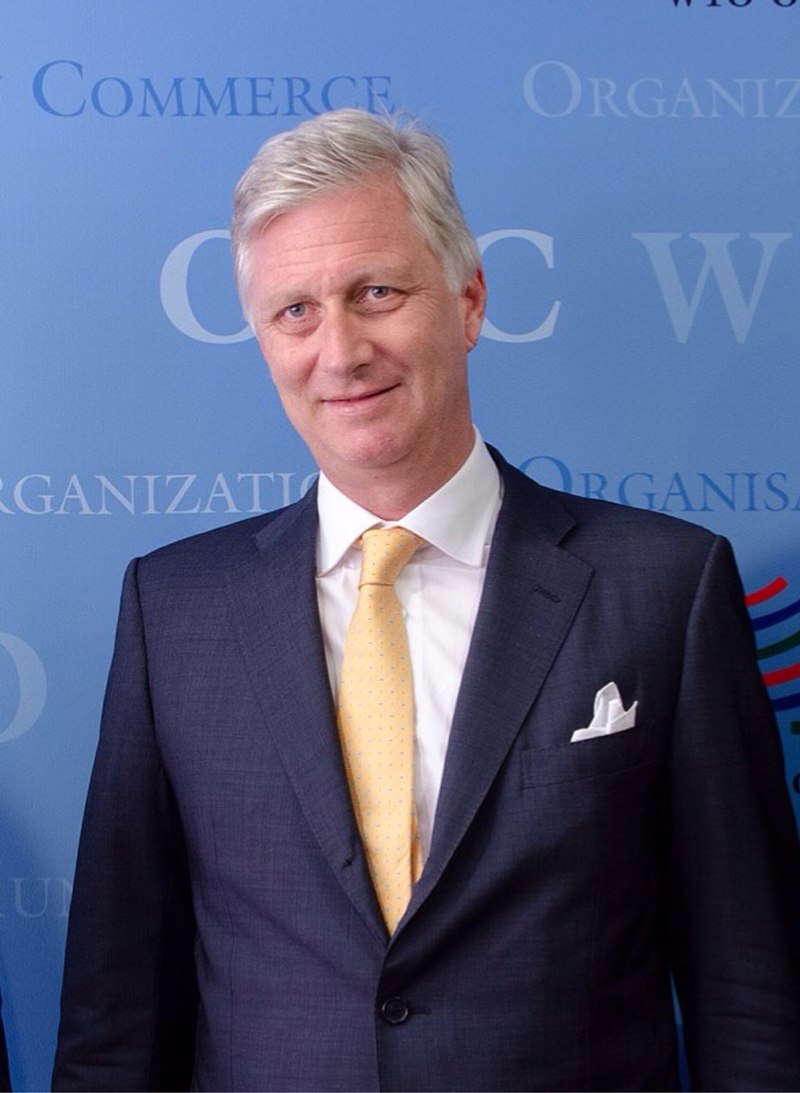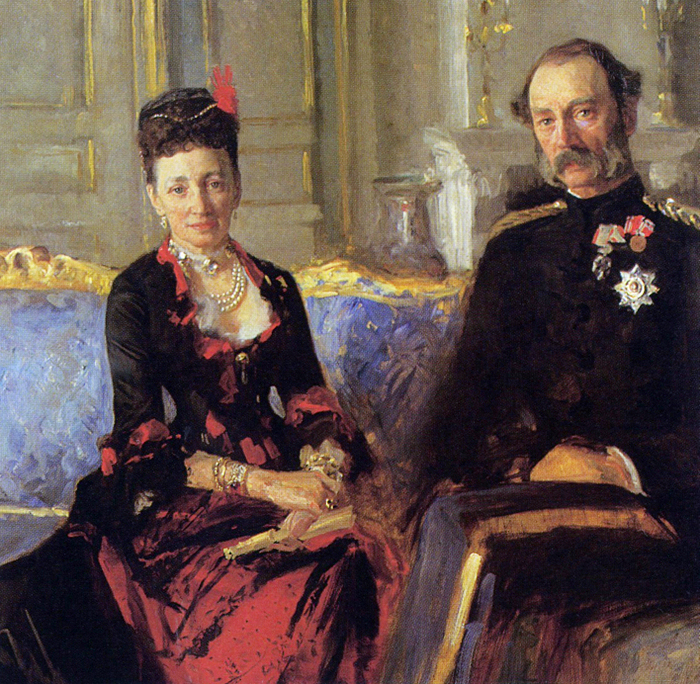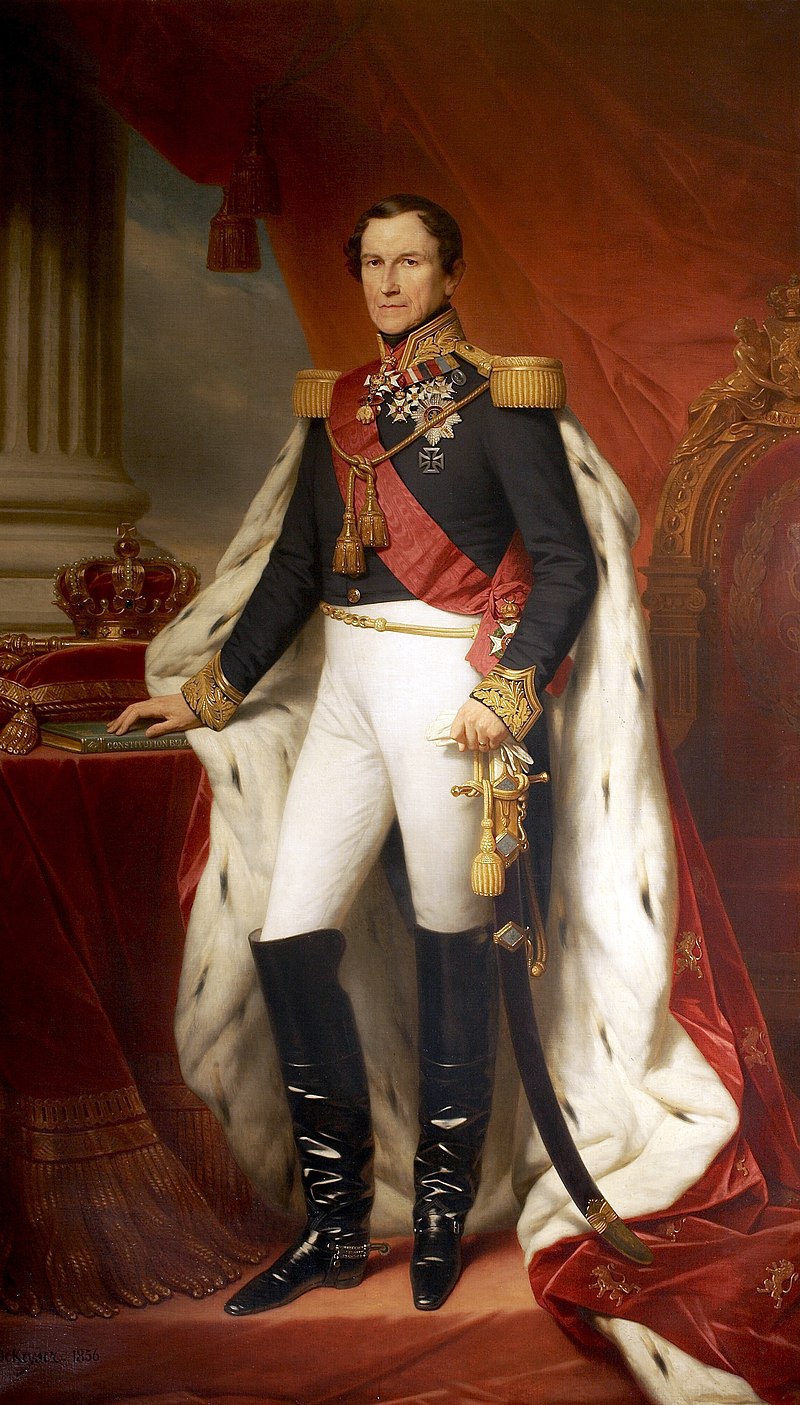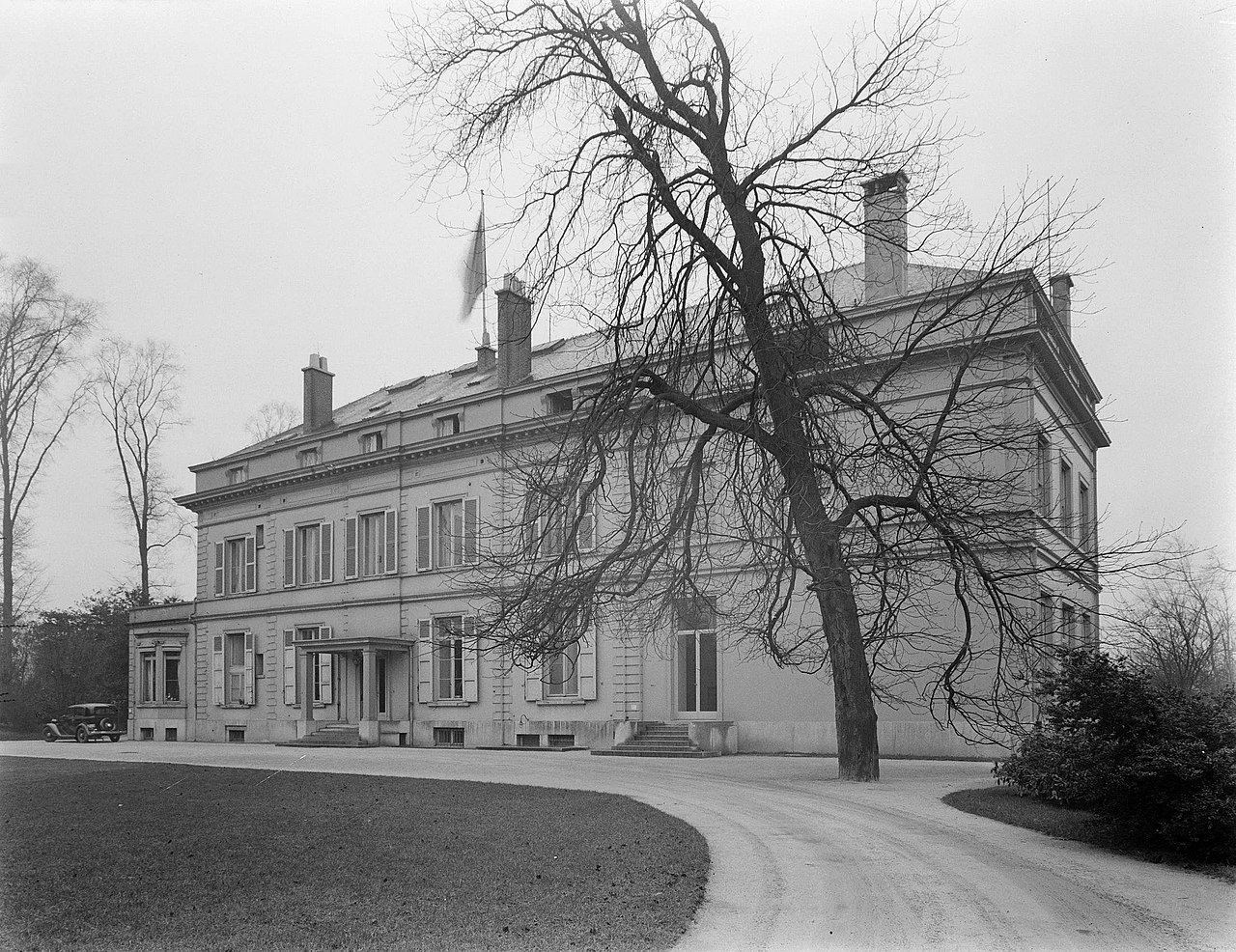compiled by Susan Flantzer
© Unofficial Royalty 2023

Princess Elisabeth of Belgium, Duchess of Brabant; Credit – By Ian Jones – Buckingham Palace reception, CC BY 2.0, https://commons.wikimedia.org/w/index.php?curid=131631531
Princess Elisabeth of Belgium, Duchess of Brabant is the heir apparent to the Belgian throne. Belgium changed its succession law in 1991 to absolute primogeniture where the succession passes to the eldest child of the sovereign regardless of gender. Males and females have equal succession rights. This means that Elisabeth is the heir apparent and comes first in the line of succession as the eldest child. She is expected to become the first Belgian Queen Regnant. When her father Philippe became King of the Belgians, Elisabeth automatically became Duchess of Brabant, the title used by the female heirs to the Belgian throne and the wives of male heirs.
From her father Philippe, King of the Belgians, Elisabeth has the typical royal pedigree with Belgian, Danish, Portuguese, and Swedish monarchs among her ancestors, in addition to Dutch, Bavarian, and other German royalty. From Elisabeth’s paternal grandmother, there is a lot of Italian nobility with a smattering of Belgian and French ancestors. Adrienne Jenny Florimonde de Fay de La Tour-Maubourg, one of Philippe’s great-great-great-grandmothers, is the granddaughter of Gilbert Motier, Marquis de Lafayette. Better known as just Lafayette in the United States, Philippe’s great-great-great-great-great-grandfather was a French aristocrat and military officer who fought in the American Revolutionary War, commanding American troops in several battles. After returning to France, he was a key figure in the French Revolution of 1789 and the July Revolution of 1830. Lafayette is known as “The Hero of the Two Worlds” for his service to both France and the United States.
Elisabeth’s mother Queen Mathilde, born Mathilde d’Udekem d’Acoz, is the first native-born Belgian queen consort. Through her mother, Mathilde has Polish noble and Polish–Lithuanian princely ancestry. Mathilde’s father descends from Walloon (a French-speaking people who live in Belgium) nobles and was titled Jonkheer, the lowest title within the Belgian nobility system. When Mathilde married Philippe in 1999, her father was created Count d’Udekem d’Acoz by Albert II, King of the Belgians, Philippe’s father.
Parents, Grandparents, Great-Grandparents, Great-Great-Grandparents, and Great-Great-Great-Grandparents of Princess Elisabeth of Belgium, Duchess of Brabant (born October 25, 2001)
- Unofficial Royalty: Princess Elisabeth of Belgium, Duchess of Brabant
- Unofficial Royalty: Kingdom of Belgium Index
The links below are from Unofficial Royalty, Wikipedia, Leo’s Genealogics Website, The Peerage, or Geni.
Parents

Philippe, King of the Belgians and Mathilde d’Udekem d’Acoz, parents; Credit – By Liesbeth Driessen – UHasselt, CC BY 3.0, https://commons.wikimedia.org/w/index.php?curid=28712939
- Philippe, King of the Belgians (born 1960)
- Mathilde d’Udekem d’Acoz (born 1973)
Grandparents
King Albert II of the Belgians and Paola Ruffo di Calabria, paternal grandparents
- Albert II, King of the Belgians (born 1934)
- Paola Ruffo di Calabria (born 1937)
- Count Patrick d’Udekem d’Acoz (1936 – 2008)
- Anna Maria Komorowska (born 1946)
Great-Grandparents

Leopold III, King of the Belgians and Princess Astrid of Sweden, great-grandparents; Credit – Wikipedia
- Leopold III, King of the Belgians (1901 – 1983)
- Princess Astrid of Sweden (1905 – 1935)
- Fulco VIII, Prince Ruffo di Calabria (1884 – 1946)
- Luisa Gazelli dei Conti di Rossana e di Sebastiano (1896 – 1989) (link in Italian)
- Baron Charles d’Udekem d’Acoz (1885 – 1968)
- Suzanne Marie van Outryve d’Ydewalle (1898 – 1983)
- Count Leon Michał Komorowski (1907 – 1992)
- Princess Zofia Sapieha (1919 – 1997)
Great-Great-Grandparents

Prince Carl of Sweden, Duke of Västergötland and Princess Ingeborg of Denmark, great-great-grandparents; Credit – Wikipedia
- Albert I, King of the Belgians (1875 – 1934)
- Duchess Elisabeth in Bavaria (1876 – 1965)
- Prince Carl of Sweden, Duke of Västergötland (1861 – 1951)
- Princess Ingeborg of Denmark (1878 – 1958)
- Fulco VII, Prince Ruffo di Calabria (1848 – 1901)
- Laura Mosselman du Chenoy (1851 – 1925) (link in Dutch)
- Augusto Gazelli dei Conti di Rossana (1855 – 1937)
- Maria dei Conti Rignon (1858 – 1950)
- Baron Maximilien d’Udekem d’Acoz (1861 – 1921)
- Marie Jeanne van Eyll (1863 – 1935)
- Clement van Outryve d’Ydewalle (1876 – 1942)
- Madeleine de Thibault de Boesinghe (1876 – 1931)
- Michał Leon Komorowski (1875 – 1950)
- Maria Zaborowska- Grzymała (1875 – 1953)
- Prince Adam Zygmunt Sapieha (1892 – 1970)
- Teresa Sobańska (1891 – 1975)
Great-Great-Great-Grandparents
King Frederik VIII of Denmark and Princess Louise of Sweden, great-great-great-grandparents
- Prince Philippe of Belgium, Count of Flanders (1837 – 1905)
- Princess Marie of Hohenzollern-Sigmaringen (1845 – 1912)
- Duke Karl-Theodor in Bavaria (1839 – 1909)
- Infanta Maria Josepha of Portugal (1857 – 1943)
- King Oscar II of Sweden (1829 – 1907)
- Princess Sophia of Nassau (1836 – 1913)
- King Frederik VIII of Denmark (1843 – 1912)
- Princess Louise of Sweden (1851 – 1926)
- Don Fulco Antonio Ruffo di Calabria-Santapau (1801 – 1848)
- Maria Eleonora Galletti di San Cataldo (1810 – 1885)
- Theodore Mosselman du Chenoy (1804 – 1876) (link in Dutch)
- Isabelle Coghen (1822 – 1891)
- Calisto Gazelli, 3rd Conte di Rossana (1803 – 1875)
- Francesca Cotti, dei Conti de Ceres (1821 – 1865)
- Enrico Vittore Felice, Conte Rignon (1828 – 1914)
- Luisa Perrone di San Martino (1838 – 1880)
- Baron Albert d’Udekem d’Acoz (1828 – 1900)
- Alice Marie de Kerchove (1838 – 1877)
- Baron Gustave Jean Casimir van Eyll (1830 – 1905)
- Marie Louise Caroline Ghislaine van Goethem (1834 – 1863)
- Eugene Edouard Charles Bernard van Outryve d’Ydewalle (1830 – 1901)
- Laurence Caroline Joséphine Jeanne Marie de Serret (1836 – 1910)
- Désiré de Thibault de Boesinghe (1837 – 1909)
- Marie Isabelle Dorothé Frennelet (1843 – 1881)
- Leon Wilhelm Komorowski-Korczak (1849 – 1900)
- Krystyna Antonina Zbijewska-Rola (1850 – 1916)
- Ambroży Zaborowski-Grzymała (? – 1899)
- Michalina Miączyńska-Suchekomnaty (1848 – 1927)
- Prince Władysław Leon Adam Feliks Sapieha (1853 – 1920)
- Elżbieta Konstancja Ewa Potulicka-Grzymała (1859 – 1947)
- Michał Maria Kamil Kazimierz Sobański Junosza (1858 – 1934)
- Ludwika Maria Wodzicka (1857 – 1944)
Sources:
This article is the intellectual property of Unofficial Royalty and is NOT TO BE COPIED, EDITED, OR POSTED IN ANY FORM ON ANOTHER WEBSITE under any circumstances. It is permissible to use a link that directs to Unofficial Royalty.



















